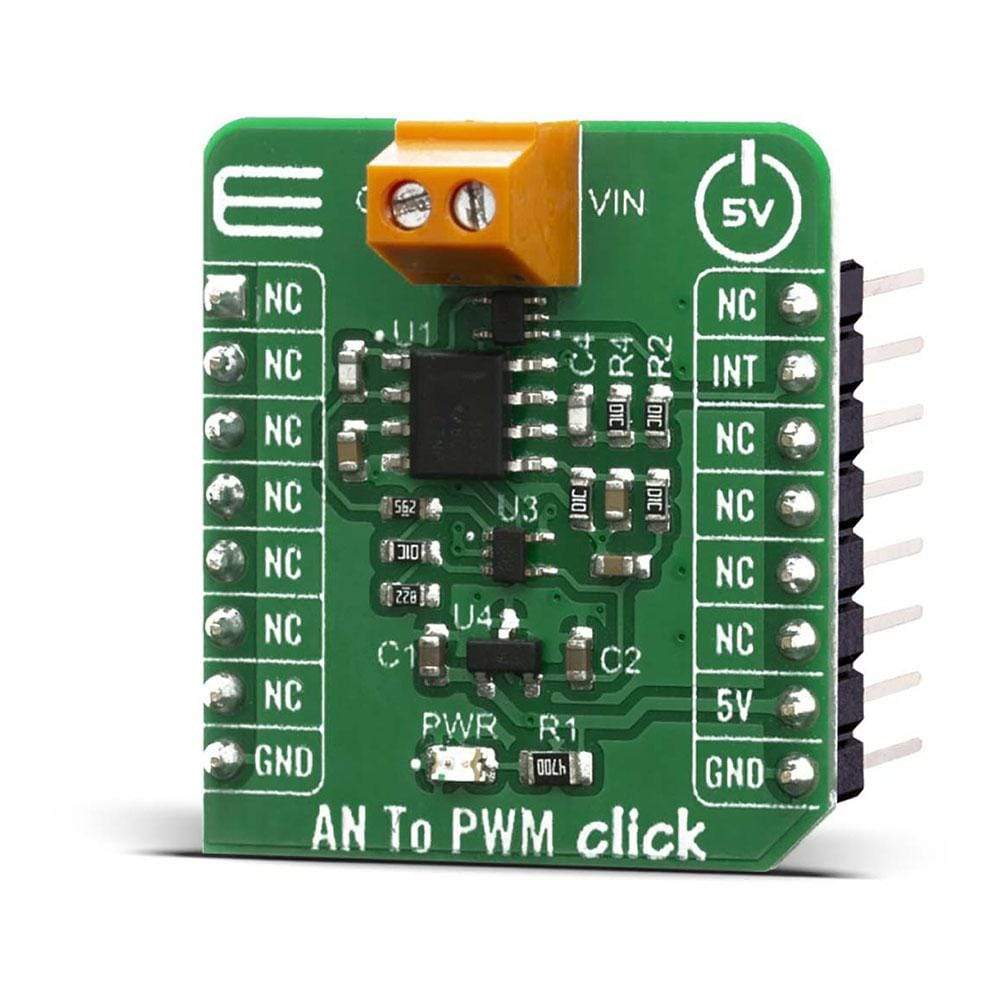
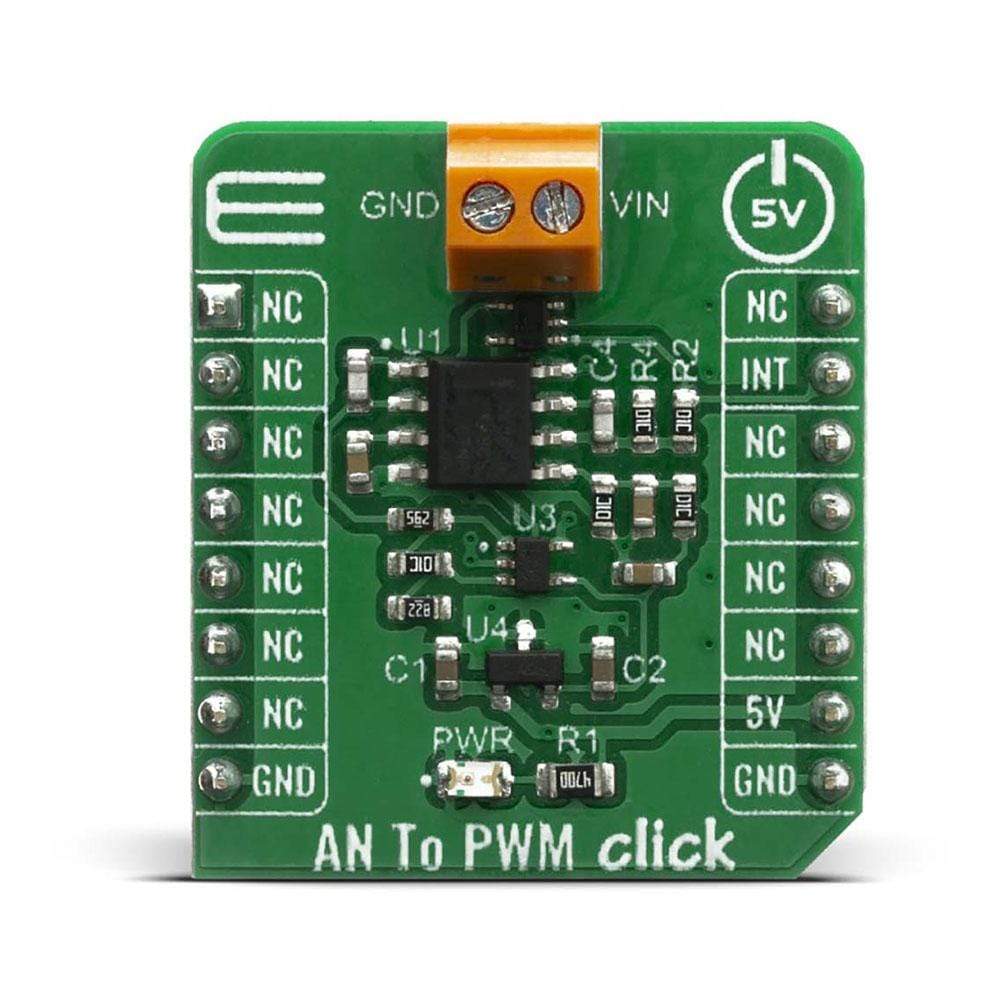
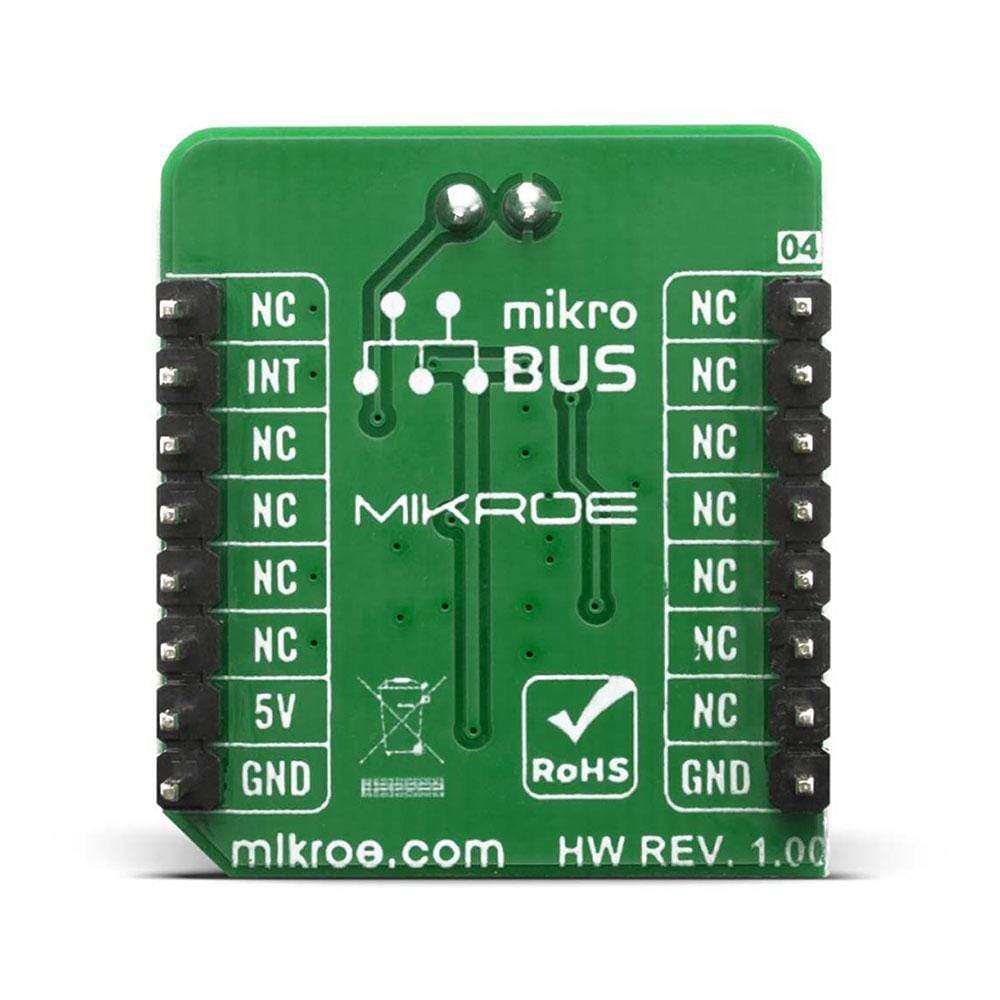
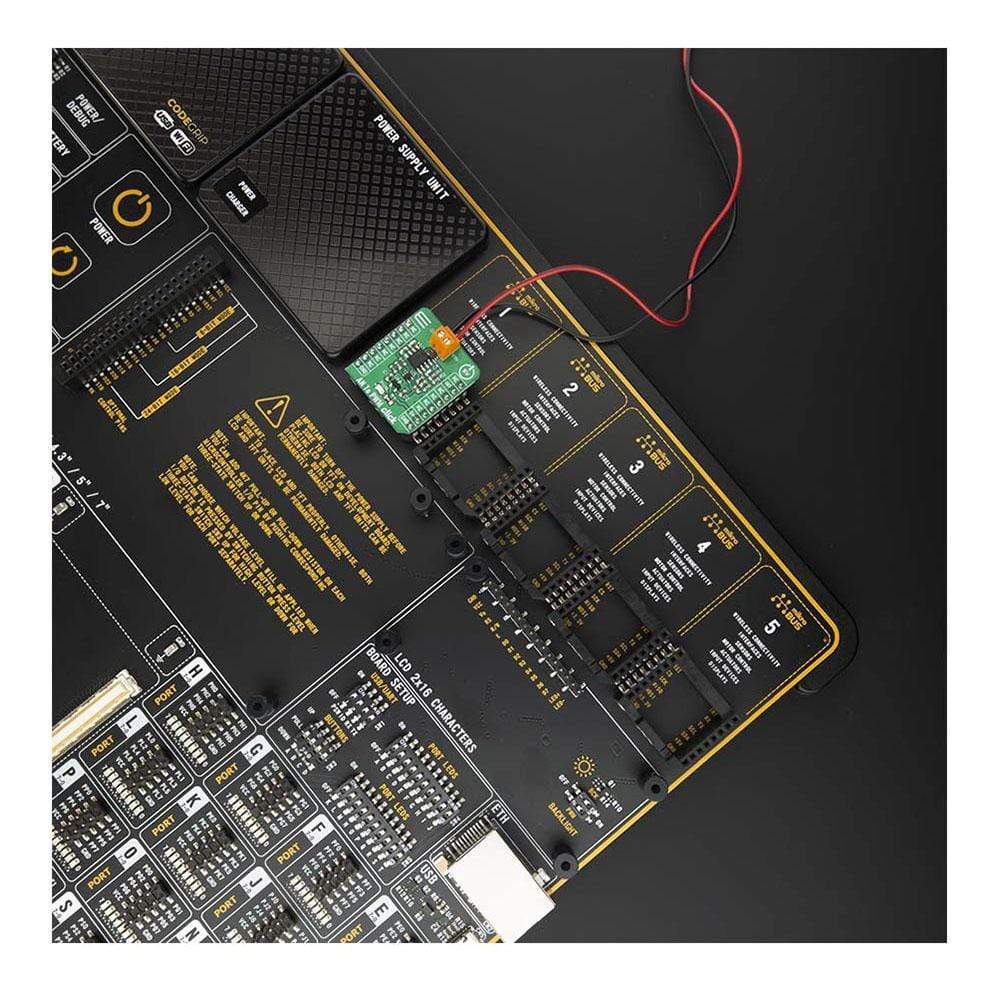
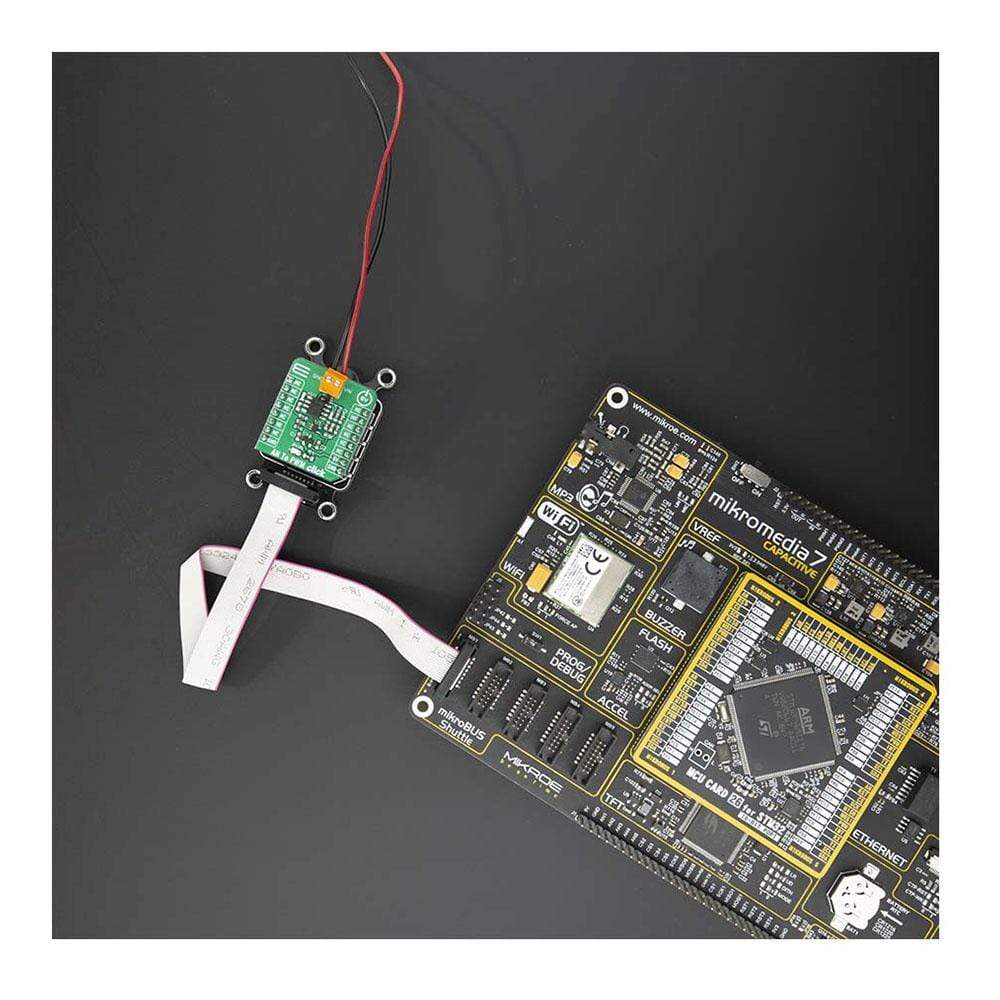
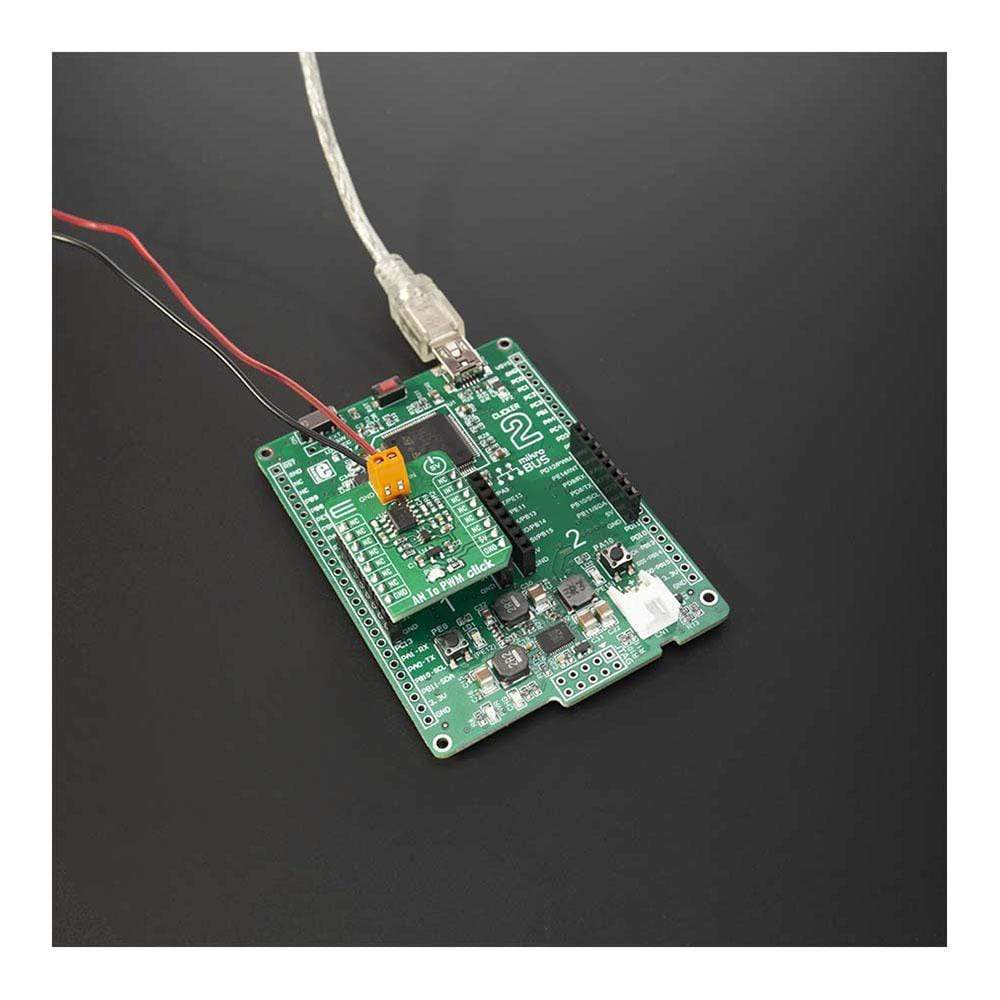
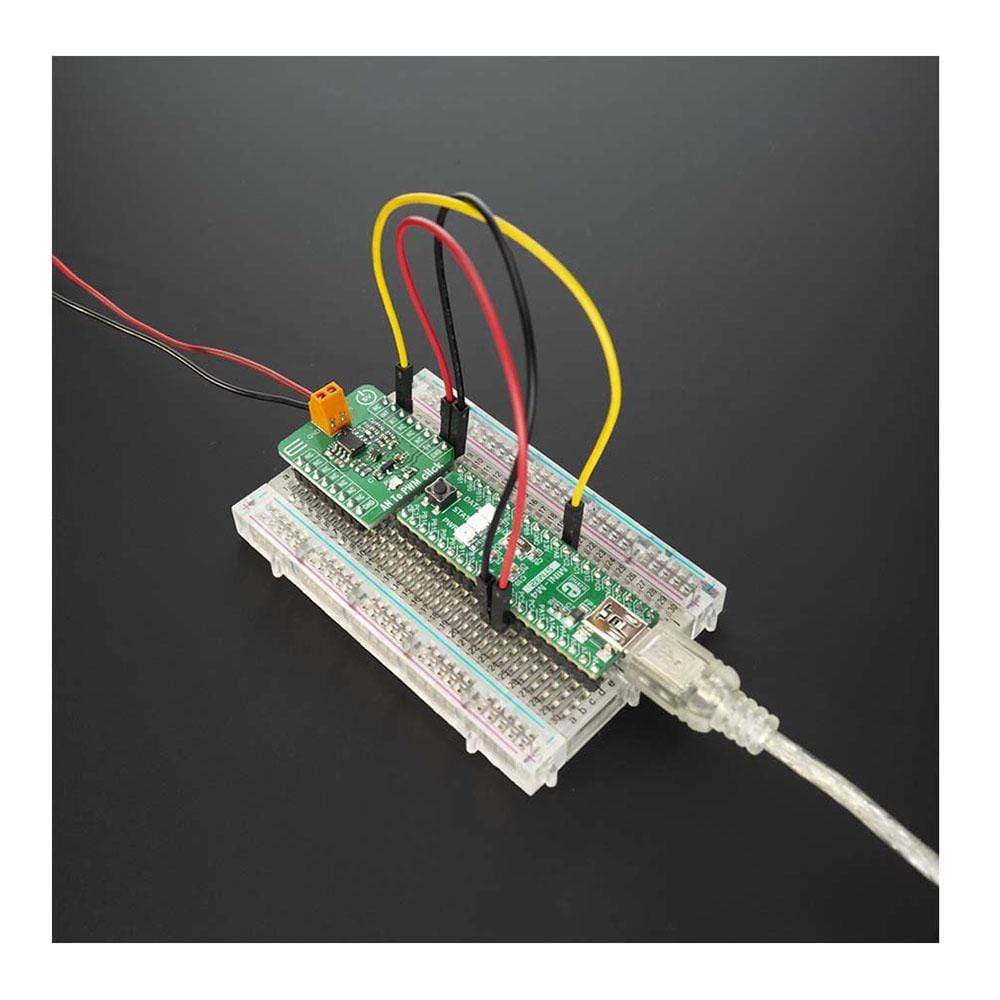
Overview
The AN to PWM Click Board™ is a device that converts the value of the input analogue signal with virtually any wave shape to a fixed frequency PWM voltage output, with a duty cycle proportional to the input voltage. It has a linear response, and by applying a signal with the voltage between -2.5V to +2.5V on its input, the Click Board™ will generate a pulse width modulated (PWM) output voltage, with a duty cycle ranging from 0% to 100%.
The AN to PWM Click features very good linearity, covers a positive and negative input voltage range and it has good temperature stability. These features allow this device to be used in various voltage to frequency applications, such as AD conversion, inspection, test and measurement equipment, while it can also be used as the variable clock signal generator.
Downloads
Das AN-zu-PWM-Click-Board™ ist ein Gerät, das den Wert des analogen Eingangssignals mit praktisch jeder Wellenform in eine PWM-Spannungsausgabe mit fester Frequenz umwandelt, mit einem Arbeitszyklus proportional zur Eingangsspannung. Es hat eine lineare Reaktion und durch Anlegen eines Signals mit einer Spannung zwischen -2,5 V und +2,5 V an seinem Eingang erzeugt das Click-Board™ eine pulsweitenmodulierte (PWM) Ausgangsspannung mit einem Arbeitszyklus von 0 % bis 100 %.
Das AN-zu-PWM-Click-Modul zeichnet sich durch eine sehr gute Linearität aus, deckt einen positiven und negativen Eingangsspannungsbereich ab und weist eine gute Temperaturstabilität auf. Dank dieser Funktionen kann dieses Gerät in verschiedenen Spannungs-Frequenz-Anwendungen eingesetzt werden, z. B. in AD-Umwandlungs-, Inspektions-, Test- und Messgeräten. Es kann auch als variabler Taktsignalgenerator verwendet werden.
| General Information | |
|---|---|
Part Number (SKU) |
MIKROE-4060
|
Manufacturer |
|
| Physical and Mechanical | |
Weight |
0.018 kg
|
| Other | |
Country of Origin |
|
HS Code Customs Tariff code
|
|
EAN |
8606018717170
|
Warranty |
|
Frequently Asked Questions
Have a Question?
Be the first to ask a question about this.







